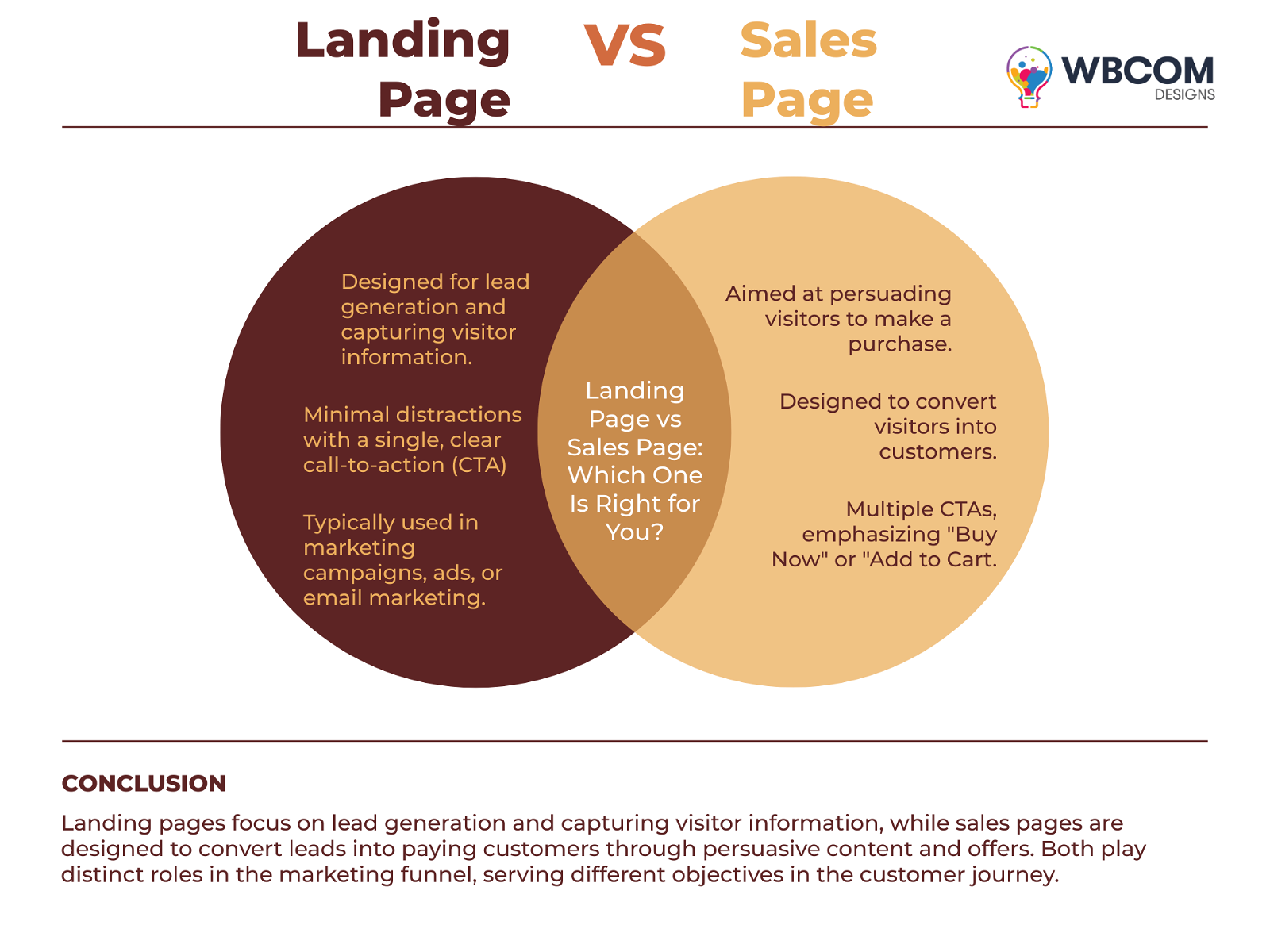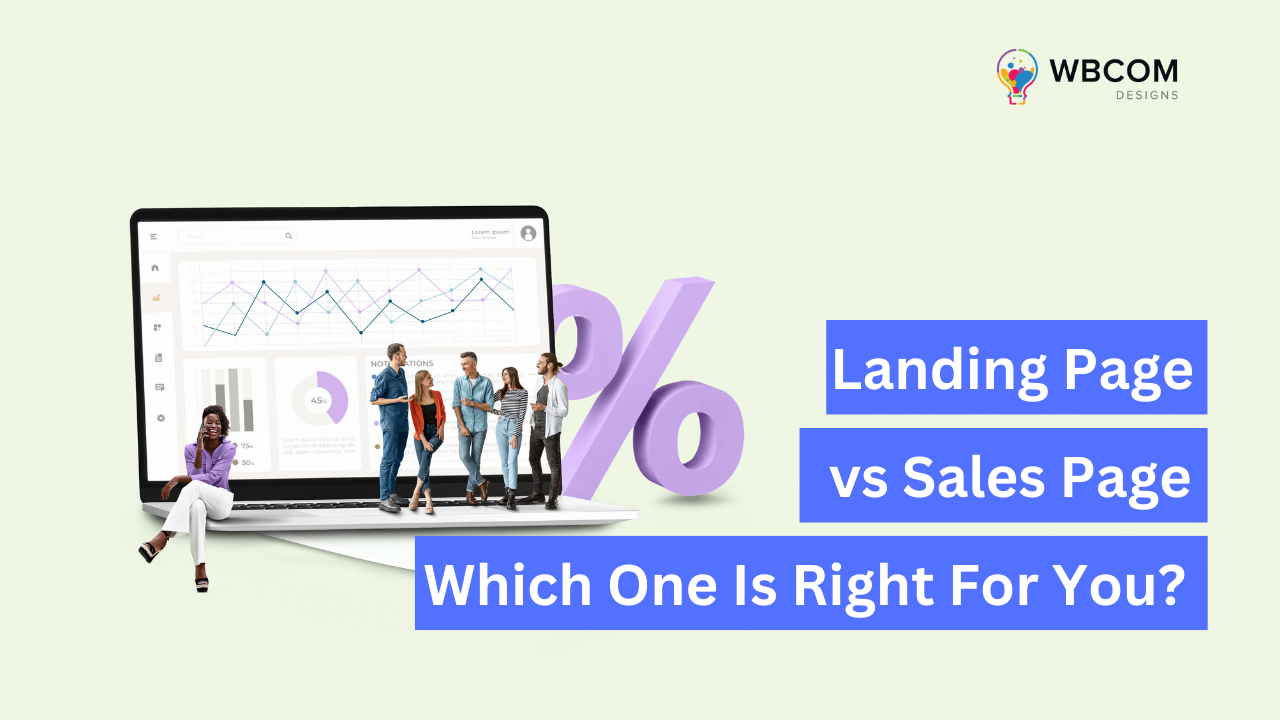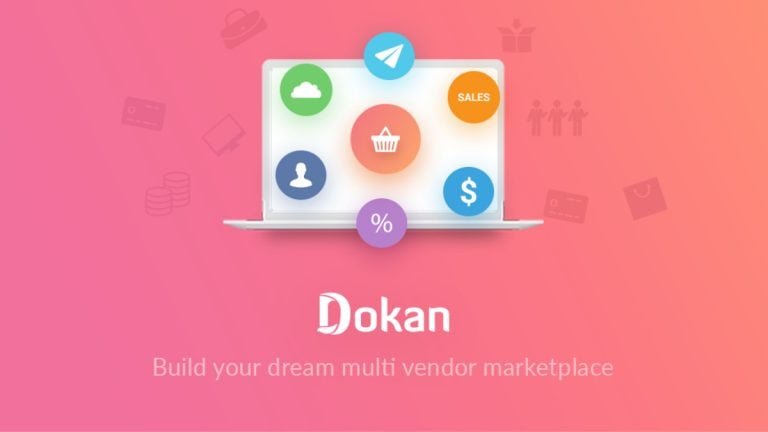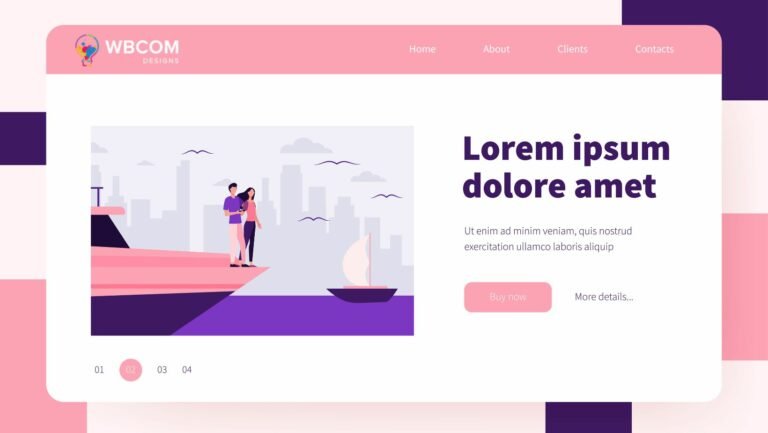In today’s world, having a website is crucial for the success of any business. However, simply having a website is not enough. To truly succeed, you need to have a high-converting page that can turn your visitors into customers. That’s where landing pages and sales pages come into play.
While both types of pages are designed to convert visitors into customers, they have different purposes and approaches. Landing pages are typically used to drive traffic to a specific offer or product, while sales pages are designed to sell a particular product or service.
In this blog post, we will take a deep dive into the differences between landing pages and sales pages and help you determine which one is right for your business. By the end of this guide, you will have a better understanding of the benefits of each type of page, and you will be able to make an informed decision about which one to use.
Table of Contents
ToggleUnderstanding Landing Pages
Landing pages are an essential component of any online marketing campaign. A well-designed landing page can help drive traffic, generate leads, and increase sales. A landing page is a standalone web page designed to convert visitors into leads or customers by encouraging them to take a specific action, such as filling out a form or making a purchase.
The purpose of a landing page is to create a seamless and distraction-free experience for the visitor, making it more likely that they will complete the desired action. Landing pages are often used in conjunction with paid advertising campaigns such as Google Ads or social media ads to drive traffic to a specific offer or promotion.
In this blog post, we will dive deeper into the differences between landing pages and sales pages, and explore which one is right for your business. We will also provide tips and best practices for creating high-converting landing pages and sales pages that will help you achieve your marketing goals.
Also Read: Best Manufacturing Industry LMS in 2023
What Are the Types of Landing Pages?
There are several types of landing pages that businesses use to achieve different goals. Here are some of the most common types:
- Lead generation landing pages: These pages are designed to capture the contact information of potential customers, such as name, email address, and phone number.
- Click-through landing pages: These pages are designed to encourage visitors to click through to another page, usually a sales page or product page.
- Squeeze pages: These pages are similar to lead generation pages but are more focused on getting the visitor to take immediate action, such as signing up for a free trial or making a purchase.
- Sales pages: These pages are designed to persuade visitors to buy a product or service, typically by highlighting its benefits and features.
- Splash pages: These pages are used to introduce a new product or promotion and often include a countdown timer or call-to-action button to generate excitement and urgency.
- Microsites: These are small websites created for a specific marketing campaign or product launch and often include multiple pages and interactive features.
Overall, the type of landing page you choose will depend on your marketing goals and the specific action you want visitors to take.
Understanding Sales Pages
Sales pages are typically longer than landing pages and provide more comprehensive information about a product or service. The primary objective of a sales page is to convince potential customers to make a purchase by highlighting the unique features and benefits of the product or service.
Unlike a landing page, a sales page is designed to provide all the necessary information that a prospect may need to make an informed purchase decision. It often includes customer testimonials, product demonstrations, and frequently asked questions. A sales page may also have a more complex structure than a landing page, with multiple sections and subsections designed to provide a more in-depth exploration of the product or service.
Overall, a sales page is a highly optimized page that is crafted to guide the prospect through the buyer’s journey and persuade them to make a purchase. While it may take longer to create a sales page than a landing page, the potential payoff in terms of conversion rates and revenue is typically much higher.
What Are the Types of Sales Pages?
There are generally two types of sales pages:
- Long-form sales pages: These are typically longer pages that provide detailed information about the product or service being sold, often in the form of a story or narrative. Long-form sales pages aim to create an emotional connection with the reader and convince them to take action.
- Short-form sales pages: These pages are much shorter and to the point, typically consisting of a headline, a few bullet points outlining the benefits of the product or service, and a call to action. Short-form sales pages are often used for lower-priced products or services where the buyer doesn’t need as much information to make a purchasing decision.
Also Read: Best Law Learning Management System in 2024
The Differences Between Landing Pages and Sales Pages

Here are the key differences between landing pages and sales pages:
Landing Pages
- Designed to drive traffic from a specific source, such as an email campaign or social media post
- Typically have one goal: to encourage the visitor to take a specific action, such as filling out a form or downloading a resource
- Usually have a simple layout with minimal distractions, such as navigation menus or external links
- Focused on capturing leads and moving them further down the sales funnel
- Often used in conjunction with PPC advertising or email marketing campaigns
Sales Pages
- Designed to sell a specific product or service directly to the visitor
- Typically have multiple sections that provide more information about the product or service, including features, benefits, and testimonials
- Often have a longer length and more detailed content than a landing page
- May include calls to action throughout the page, such as a “Buy Now” button or a lead capture form
- Focused on driving immediate sales and conversions
- Often used for more expensive or complex products or services
When to Use a Landing Page
- When you want to generate leads: Landing pages are effective for capturing leads through forms, offering free trials or demos, or promoting gated content.
- When you want to promote a specific product or service: Landing pages can be designed to showcase the benefits and features of a particular product or service, which can increase conversions.
- When you are running a targeted campaign: Landing pages can be used to target specific audiences and messaging, which can increase the relevancy and effectiveness of your campaigns.
- When you want to measure the success of a campaign: Landing pages can be used to track and measure the success of a campaign, including conversion rates, click-through rates, and other key metrics.
- When you want to improve your SEO: Landing pages can be optimized for search engines, which can improve your overall website’s SEO and increase traffic to your site.
When to Use a Sales Page
A sales page is most effective when:
- You have a complex product that requires explanation: If you have a product or service that requires detailed explanation, a sales page is a better option as it allows you to go into detail about the features and benefits of the product.
- You are selling a high-ticket item: If your product is expensive, a sales page can help justify the cost by providing all the information the customer needs to make an informed decision.
- You want to create urgency: A sales page can create a sense of urgency by offering limited-time promotions or emphasizing the need to act quickly.
- You want to establish credibility: A sales page allows you to establish credibility by including customer reviews, testimonials, and case studies.
- You want to build a relationship with the customer: A sales page can help build a relationship with the customer by providing information about your brand, your values, and your mission.
Choosing the Right Page for Your Business
Choosing the right type of page for your business depends on your marketing goals and what you want to achieve with your website. Here are some factors to consider when deciding between a landing page and a sales page:
- Marketing goal: If your goal is to generate leads and capture customer information, then a landing page may be the better option. If your goal is to sell a product or service, then a sales page may be more appropriate.
- Offer complexity: If your offer is simple and straightforward, a sales page may be more effective. However, if your offer is more complex, a landing page may be a better choice.
- Audience awareness: Consider your audience’s level of awareness of your product or service. If they are already familiar with what you offer, a sales page may be more effective. If they are not as familiar, a landing page may be better for providing more information and building trust.
- Traffic source: Consider the source of your traffic. If the traffic is coming from a paid search campaign, then a landing page is usually the better option. If the traffic is coming from social media or content marketing, then a sales page may be more appropriate.
- Budget: Landing pages are usually less expensive to create and test than sales pages, so if you have a limited budget, a landing page may be the best option.
Ultimately, the decision between a landing page and a sales page should be based on what will best help you achieve your business goals.
Final Thoughts
In conclusion, having a high-converting page is essential for any business that wants to succeed online. Whether you need a landing page or a sales page will depend on your business goals, the type of product or service you offer, and the stage of the customer journey you want to focus on. Remember that landing pages are great for capturing leads and providing relevant information to potential customers, while sales pages are ideal for persuading visitors to make a purchase.
When deciding which page to use, it’s important to keep in mind your audience’s needs and preferences, as well as your business objectives. Use the guidelines and best practices discussed in this guide to make an informed decision and start creating high-converting pages that will help you achieve your business goals.
We encourage you to test different types of pages, analyze their performance, and optimize them for better results. Remember that ongoing testing, optimization, and refinement are key to creating pages that resonate with your audience and drive conversions. By implementing a well-planned page strategy, you’ll be on your way to achieving online success and growing your business.
Interesting Reads:
Best Payment Plugins for WordPress
10 Best Data Intelligence Software & Tools for User Behavior Analytics
How to Protect Your Online Marketplace from Fraud and Scams?








